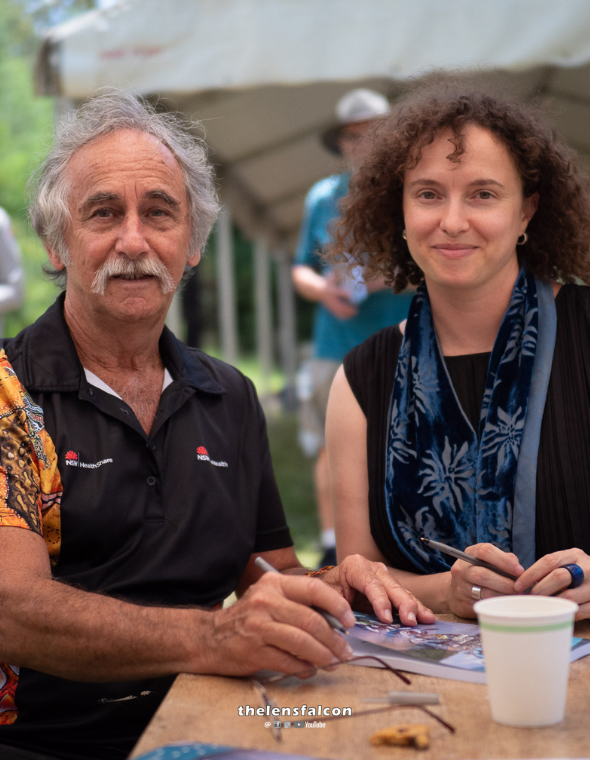Please join us for an author presentation with John Heath & Ashley Barnwell at our Port Macquarie Library on Saturday 16th March at 11.00am.
Meet the Authors …
Dr. John Heath is a Birrpai Goori through the Bugg, Dungay and Graham families. He has a long term involvement in Aboriginal community development as well as research and publication. His published works include Birrpai: Beyond the lens of Thomas Dick, Healing the Spirit (co-authored with fellow Birrpai Traditional Owner Bob Davis), and Goori-Bugg Dreaming which was derived from his 2019 UNE familial doctoral thesis The Seventh Generation. John is currently working part time as an Indigenous Research Fellow at the University of Melbourne and in this capacity has worked closely with Dr. Ashley Barnwell on a number of projects including the publication “From the Inside: Indigenous-settler reflections on the family uses of the Thomas Dick ‘Birrpai’ Photographic Collection 1910-1920.”
Dr Ashley Barnwell is a settler descendant born on unceded Birrpai Country. On her mother’s side, she is a descendant of John Dick, a leather tanner for the Port Macquarie penal colony, and Albert Dick, a champion for the reversion of Lake Innes to freshwater in the 1950s-60s. She is a Senior Lecturer in Sociology at the University of Melbourne and is the author of several books in sociology, history, and literature. Her current project explores family histories as places for reckoning with past social injustices.
 BURRAWAN: The desecration and resurrection of Lake Inness
BURRAWAN: The desecration and resurrection of Lake Inness
In 1933 a drain was cut between Burrawan/Lake Innes and Cathie Creek, letting salt water into the largest freshwater lake in New South Wales, damaging its rich ecology of plants and animals. A grab for farmland, the doomed project went ahead against years of expert advice. It was an act of destruction following in the footsteps of colonial greed and disregard for First Nations culture and Country since the commencement of the invasion of the Birrpai in 1821.
Here Heath and Barnwell tell the story of Burrawan, the folly of its desecration and our expressed hope for its resurrection.
This book aims to elevate the value and power of local communities to step up and protect their surroundings. Furthermore, it demonstrates how such actions are enriched by learning about and foregrounding a First Nations’ approach to Country as a living source of nourishment for people, plants, and animals that demands a reciprocity of care and respect, rather than being perceived as simply an economic resource to be bled dry without consequence.









